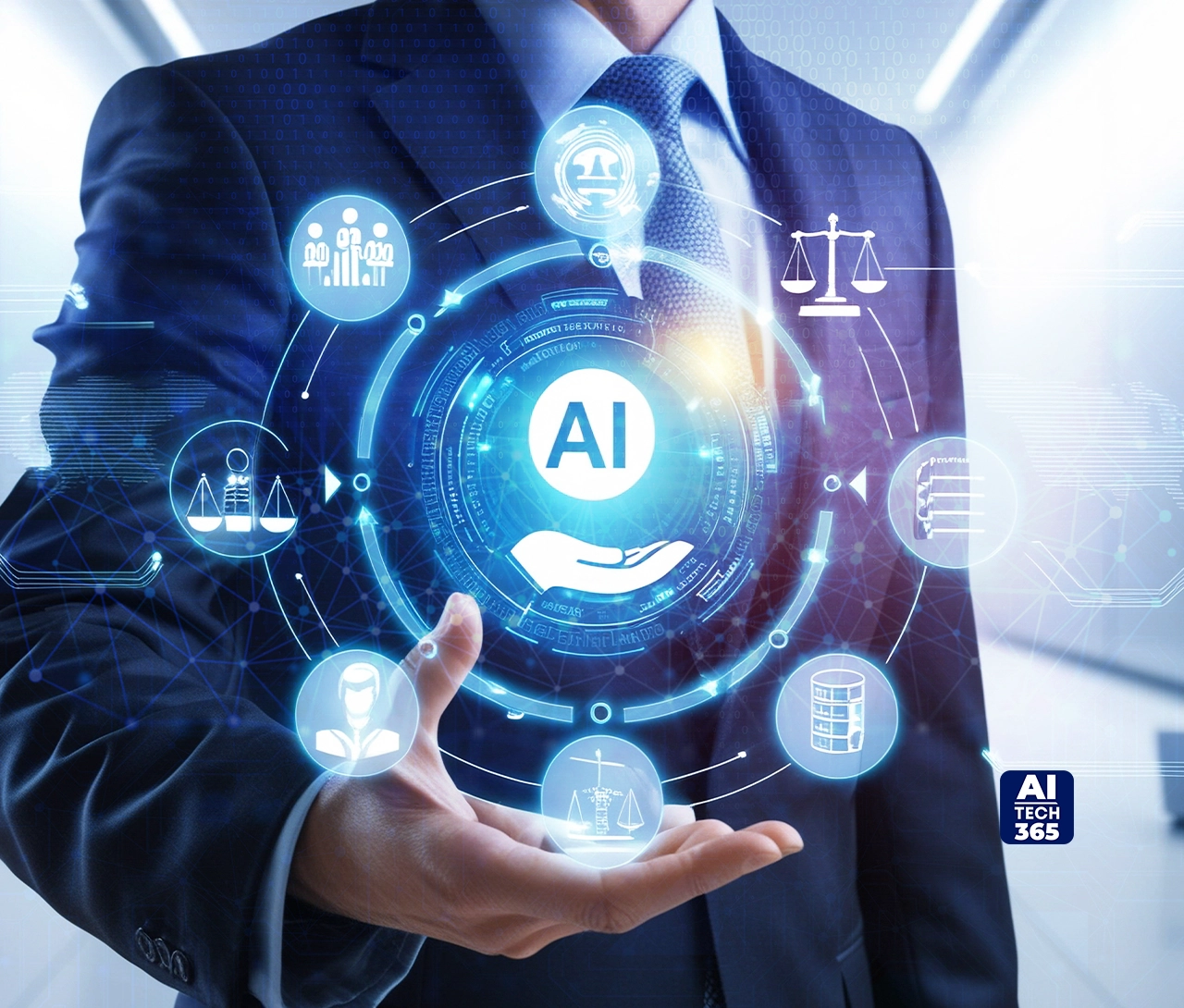Every leader right now is walking a tightrope between AI ambition and privacy risk. Generative and Agentic AI are moving faster than most boardrooms can even process, and that’s the real problem. Innovation is outpacing responsibility. The bigger question isn’t how far AI can go, it’s how much privacy we’re willing to trade to get there.
That’s the privacy paradox in plain sight. More data makes AI sharper, smarter, and more useful. But the same data exposure tears down trust, the one thing that actually keeps users and regulators on your side. You can’t scale innovation on a cracked foundation.
The next decade of AI and privacy will separate the loud adopters from the smart builders. This isn’t about ticking compliance boxes anymore. It’s about weaving ethical AI and privacy-enhancing technology straight into the business model. The companies that do that early will own the trust game.
Prediction 1. The Regulatory Crucible from Fragmentation to Interoperability
The next decade will test how far global leaders can stretch their comfort zones. The EU AI Act isn’t just another regulation; it’s quickly turning into the world’s gatekeeper for AI and privacy. Its risk-based model that classifies high-risk systems, demands transparency, and enforces human oversight is setting a tone every serious economy will eventually echo. Whether you’re in New York, Singapore, or Bengaluru, the price of market access will soon be alignment with Brussels.
But here’s the real tangle. The world isn’t marching in sync. While the EU tries to centralize, the US runs a patchwork of state-level privacy and AI rules, and Asia is pushing its own versions like Japan’s PPC or India’s DPDPA. Add sector-specific acts like DORA for finance, and what you get is regulatory spaghetti that few compliance teams can untangle. The answer isn’t more policy; it’s interoperability, governance that adapts to different regimes without losing its backbone. Companies that treat flexibility as a feature, not an afterthought, will stay ahead of the storm.
The accountability game is also changing. The days of ‘we didn’t know what the model did’ are over. In January 2025, the US Federal Trade Commission made it clear that existing consumer and privacy laws apply directly to AI. Their report AI and the Risk of Consumer Harm warned that firms must analyse whether their tools violate people’s privacy. That’s bureaucratic-speak for ‘we’ll hold you responsible.’ The SEC is following suit, pulling AI oversight into the boardroom and making it part of fiduciary duty.
Globally, the numbers tell the same story. The OECD’s Regulatory Policy Outlook 2025 mapped more than 1,000 AI policies across 70-plus jurisdictions. Translation: fragmentation today, standardization tomorrow. And that tomorrow will belong to companies that stop reacting to compliance chaos and start building systems that meet privacy expectations by design.
In short, regulation is no longer a hurdle; it’s a filter. The ones who pass through it will define what ethical, privacy-first AI looks like for the rest of us.
Prediction 2. Ethical AI as a Non-Negotiable Competitive Edge
Ethics isn’t a soft skill anymore; it’s a profit engine. The era of checkbox ethics and ‘responsible AI’ slogans is ending fast. Companies that treat AI governance as a PR exercise will soon be outpaced by those that can prove their systems are safe, fair, and transparent. The future belongs to the auditable. Frameworks like ISO/IEC 42001 are becoming the blueprint for AI management systems, verifiable processes that show regulators, investors, and users that trust isn’t an accessory, it’s the foundation.
What’s shifting underneath is control. The right to self-determination in the age of Agentic AI is no longer just about consent forms or privacy settings. It’s about whether people can decide how their digital persona is used, trained, or even replicated. As generative and autonomous systems get more personal, regulations will evolve to give individuals real power over how their data is sourced and how much of them lives inside an algorithm. This shift will force brands to rethink not only data governance but their entire relationship with the user.
Explainability will also move from nice-to-have to survival strategy. Black-box models might win in accuracy, but if they can’t explain a decision, they’ll lose in court and in the market. Explainable AI (XAI) isn’t just about compliance; it’s about trust under scrutiny. When customers, auditors, or journalists ask ‘why,’ businesses need a clear, auditable trail, not a shrug.
The payoffs are tangible. According to IBM’s October 2025 report How Trustworthy AI Helps Convert Capital into Capabilities, companies in the top quartile of AI ethics spending show nearly 30 percent higher operating profit than those in the bottom quartile. In short, ethical AI has become capitalism’s newest differentiator. Trust, transparency, and explainability aren’t cost centres anymore, they’re competitive weapons.
Prediction 3. The Dawn of Privacy-First Infrastructure Making PETs Mandatory
Data collection is not going to be the main thing in the following ten years; it will come down to less data but more intelligent use. Very strict data minimization regulations are making companies rethink their AI pipelines and at the same time, Privacy-Enhancing Technologies (PETs) are being recognized as the only way to strike the right balance between compliance and innovation. The goal is no longer just to protect data but to keep its utility alive without compromising privacy.
According to the World Economic Forum’s AI Governance Alliance Roadmap for Businesses and Governments released in January 2025, privacy-first infrastructure is becoming the new backbone of digital economies. The report outlines a clear direction where companies must operationalize privacy as code, embedding it at every stage of AI development rather than bolting it on after deployment.
Federated Learning is already leading this shift. Instead of hoarding user data on centralized servers, it trains models directly on devices, ensuring insights are shared but not the raw data itself. This model of distributed intelligence makes compliance almost native and drastically cuts exposure risks.
Homomorphic Encryption and Secure Multi-Party Computation take it a step further. They allow organizations to compute on encrypted data, enabling secure cross-border collaboration without ever decrypting sensitive information. For industries like healthcare and finance, this is a game-changer as it opens the door to global AI cooperation without breaching national or regional privacy walls.
Synthetic data adds another layer of resilience. By creating statistically accurate but non-identifiable data, it helps train and test AI systems safely while maintaining performance integrity. It is how organizations can innovate on data that technically does not exist, avoiding both bias and breach.
But this privacy-first approach is neither cheap nor simple. PETs demand immense computational power, which is where specialized hardware and Confidential Computing step in. Expect these to become as standard as firewalls once were. They make running encrypted workloads practical at enterprise scale, turning what was once theoretical into routine.
In short, privacy-first architecture is no longer a compliance expense. It is a survival investment. The businesses that master PETs early will not only meet regulations but also set the trust standards everyone else will have to follow.
Strategic Roadmap for Leaders to Future-Proof the Enterprise
Let’s be honest. Most companies still treat AI governance like a side project, something to fix later. That luxury is about to end. The smartest move right now is to split the responsibilities. You need someone whose only job is to keep AI accountable. Call them the Chief AI Risk Officer. Their job is not to slow innovation but to make sure your AI ambition doesn’t turn into your next compliance nightmare.
Next comes the supply chain. You can’t just plug in third-party models and hope for the best anymore. Every external AI or data vendor needs to go through privacy and compliance checks. Foundational models especially should face proper audits to see what data they were trained on and whether that data can leak private or copyrighted information. You can’t manage what you can’t verify.
Data governance also needs an upgrade. Think of it as your transparency engine. Invest in tools that automatically map where your data comes from, how it moves, and where it’s used. It’s not about ticking boxes; it’s about knowing your system inside out before regulators or customers start asking tough questions.
And then comes the human bit. According to Microsoft’s Responsible AI Transparency Report 2025, their biggest improvement came from better tools for risk checks and compliance tracking. The message is simple. Tech won’t save you if your people don’t get it. Train your legal, privacy, and engineering teams to actually understand the tools they use. That’s how your future-proof, not with slogans but with skill.
Building the Trust Economy
Here’s the simple truth. Over the next ten years, AI and privacy will be based on trust and not on hype. The rules will become stricter, ethics will be considered, and Privacy-Enhancing Technologies will go from being research projects to a regular part of the corporate strategy. That’s the new reality. The real advantage won’t come from who collects the most data but from who handles it right. Leaders who start building privacy-by-design systems today won’t just dodge fines; they’ll set the standard everyone else will chase. Trust is about to become the most valuable currency in the digital economy, and only the proactive will own it.


